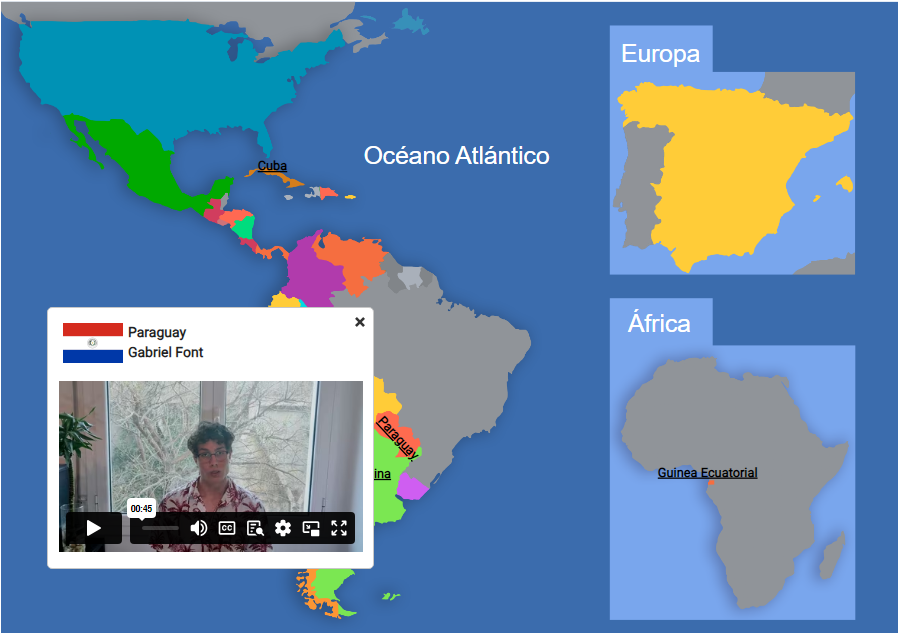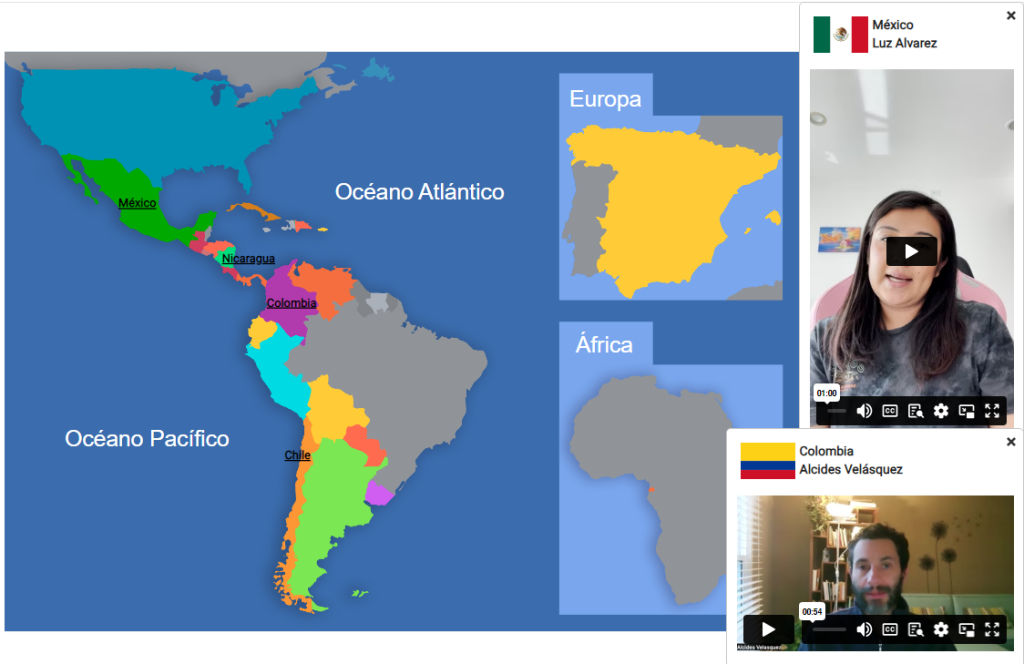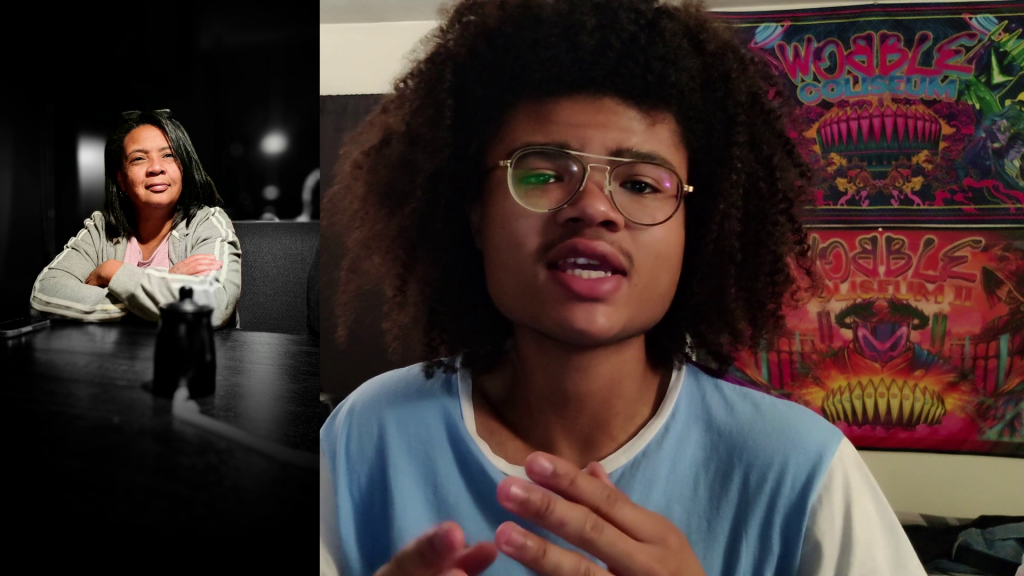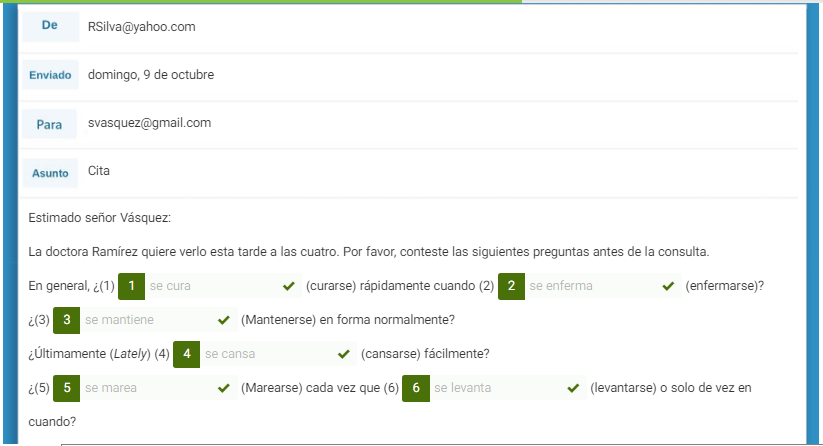Exploring Culture
My semester in Spanish 102 was filled with activities and assignments surrounding the exploration of many different Spanish cultures. This primarily occurred throughout my completion of the culture section in Lingro Learning but in-class discussions and lessons also took place, which helped to further inform me of the topics.
Early in the semester, the class had assignments and discussions talking about the legality of same-sex marriage in Latin American countries. This helped widen my perception of the topic as a whole, as I was not aware that it was still not fully legal in some of these parts of the world. For instance, I was able to identify which countries are likely more restrictive or have a controlling government such as Paraguay or Equatorial Guinea which still have it banned or not recognized. On the other hand, I could also identify which countries were probably more culturally progressive like Cuba and Argentina which recognize the concept and have it fully legalized.
Furthermore, there were many conversations about the popularity of different sports in certain Latin American Countries, many of which I was not even aware they had an interest in. An example of this would be when I found out that baseball is very popular in Nicaragua. It helped open my mind to the realization that a primarily American sport was still gaining traction in other countries that are not itself, this is an instance of our cultures intertwining and cross-mingling in one way or another.

A screenshot from one of the cultural exploration lessons about same-sex marriage in unit 6 of LingroLearning.

A screenshot from one of the lessons about the various sports played in a few Latin American countries in unit 7 of LingroLearning.
Engaging in Communities
I believe that engaging in one’s community can help benefit everyone involved. If the engagement is helpful and uplifting then the community benefits from your actions and participation. While, at the same time, you also gain knowledge and understanding of the world in which you live. Not to mention that members of the community may come to your side if you ever need help, in exchange for your previous helpful engagement.
I did not do much community participation and engagement this semester. This is something that I wish to change about my life in the forthcoming months.
Interpersonal Communication
This semester I faced a new challenge of interpersonal communication with the TalkAbroad activity that we had to complete. Initially, I was very nervous to get on the call and talk to someone who didn’t understand my native language just as much as I didn’t understand theirs. In my head, this meant that there would be know fallbacks or crutches, no way for them to understand me if my message didn’t accurately translate in their mind. This scared me but I knew I had to approach it with confidence and eventually I somewhat gained an understanding.
Upon completion of both sessions (two had to be completed for the semester) I realized that it was not as hard as I initially thought it would be. A solid 80% of the time our words were mutually understood by the other person. In cases where it was not understood, I will admit, it was a bit awkward, but it was quickly remedied as we moved on to the next topic or question. During my first session, I went into the call with the expectation that I would do badly, and naturally, I did. But the second time around, I believed in myself a bit more and I feel like it overall went smoother than the prior conversation. Talking with others who are actually from the countries I am studying made the entire concept of learning a foreign language feel much more real and applicable. I would say I benefited greatly from participating in TalkAbroad.
click here to listen to my first talk abroad conversation (it would not allow me to directly upload the audio)
Presentational Speaking
In this semester of Spanish, we completed a presentational speaking project during unit 6 “¿Quién es mi familia?” This culminated in a 3-minute video in which we discussed and described the members of our family. This included talking about the qualities, characteristics, and relationship to the person.
It took me many, many, attempts to get my recording right because I initially found it very difficult to speak non-stop and not really give myself time to think in between words. After my final recording session, I finally got it to a place where I was happy. I felt like my constant repetition of trying to get it right was helpful to engraining these terms and grammar practices further into my mind and I thought the project was very educational overall!

A screenshot from my presentational speaking project for unit 6 in Lingro Learning. I am describing the characteristics of my mother.
click here to see my full unit 6 project video (it would not let me upload it directly)
Presentational Writing
My class was assigned quite a few presentation writing projects throughout the duration of the course. We had many times in which we wrote in a presentational manner and, on more than one occasion, there were end-of-unit projects that we completed that took on the same format.
For instance, within unit 7 “¿Cómo mantener la buena salud” the final project consisted of us making a flyer for a club that participated in an activity of our choice. I chose baseball and wrote the assignment as if I was promoting joining my baseball club to students around the campus. At first it was a bit difficult to translate the tone I wanted to give off but overall I found the process to be interesting and helpful to my understanding of how things are promoted and advertised.
A pdf of my sports club project for unit 7 in Lingro Learning.
Another instance of this took place in unit 9 “¿Cómo te cuidas?” in which our project had us create an infographic on how to maintain good health. This was another helpful activity within the presentational writing space. I learned how the Spanish world interprets infographics and takes care of themselves.
A pdf of my infographic project for unit 8 in Lingro Learning.
Interpretive Listening
In doing my homework for this class, I found there to be many interactive and precise listening activities that had to be completed. These activities usually occurred in every section of LingroLearning, but listening also took place during class time as well.
The speakers in the audio spoke at the actual pace one would talk in Spanish, they did not slow down to accommodate the student listening. I found this both good and bad; good because it presented a realistic portrayal of how I would be hearing Spanish outside of the educational world. But also bad because I could not keep up or understand their words sometimes so it oftentimes took many replays to understand their message. Overall, I found these activities to be helpful but they certainly were not my favorite. Although, over the course duration I slowly got more and more used to them.

A screenshot of one of the interpretive listening activities from unit 8 of LingroLearning. I had to listen to the audio and answer questions based on it.
Interpretive Reading
We completed many interpretive reading exercises that I found to be extremely beneficial to my understanding of the language. This took place in-class through worksheets and participation but it also occurred online through Lingro Learning. Some activities include deciphering emails and text messages that seemed like realistic versions of how people actually communicate in the Spanish culture.
Completing these activities challenged me to think in a real-world, non-strictly-educational manner. I had to view these conversations as how a legitimate person would interpret them and fill in the blanks that were missing. To me, this contextualized how a person might actually speak when talking to the people in their lives. It made these lessons feel more useful and applicable outside of the course, so i really enjoyed doing these!

A screenshot of a fill-in-the-blank email activity in unit 9 of LingroLearning.